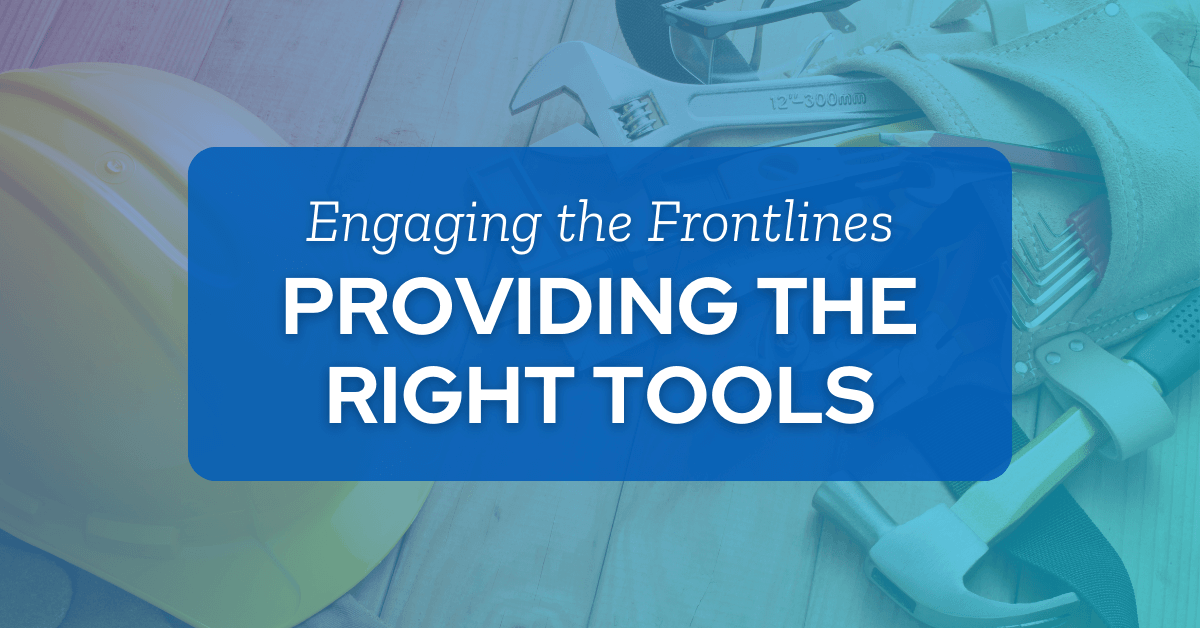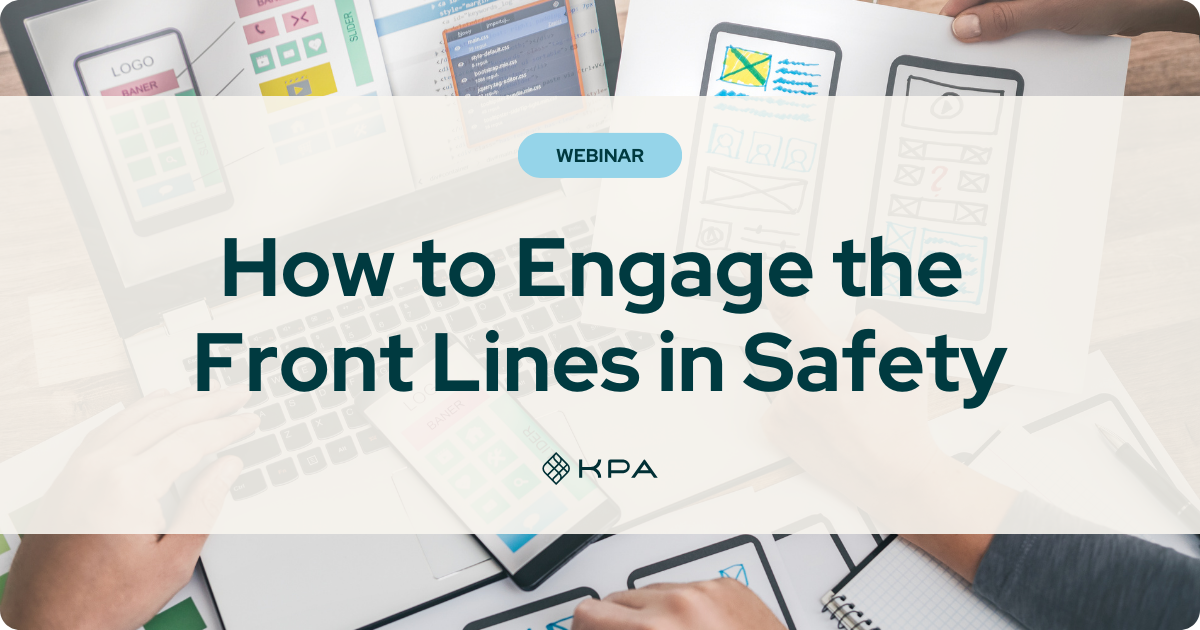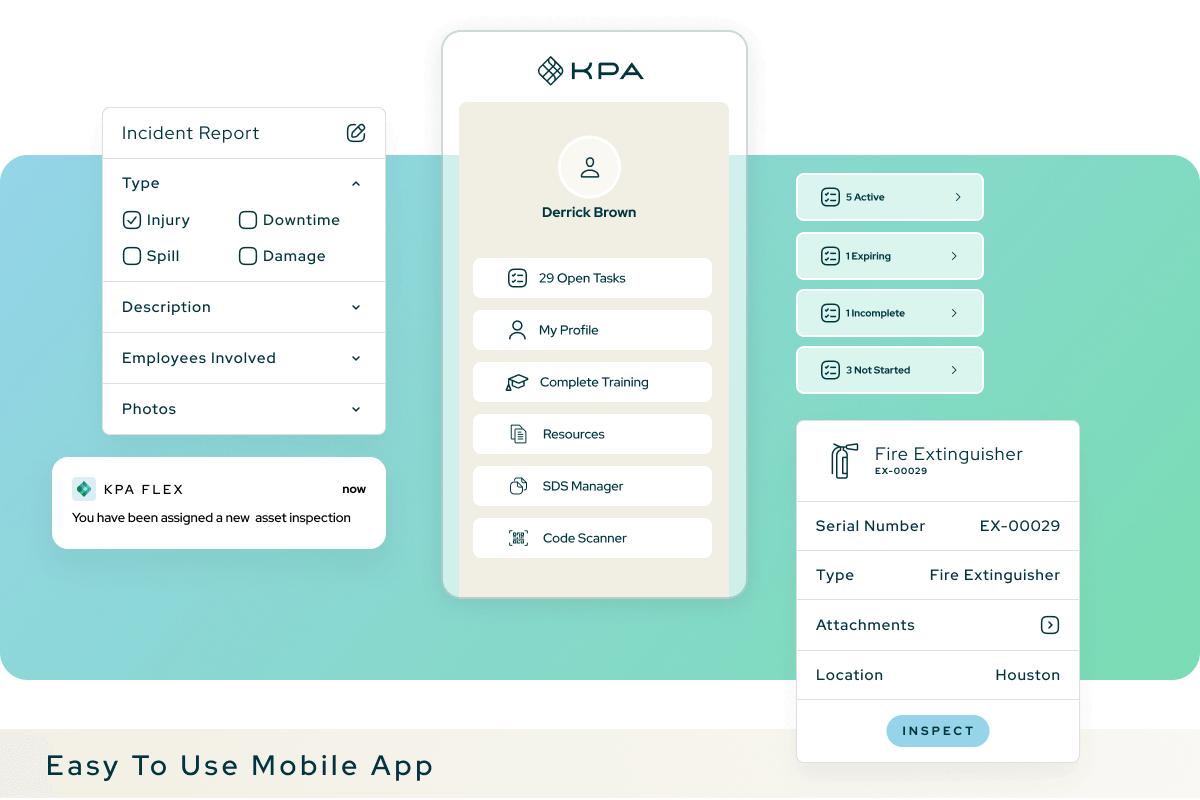In today’s high-hazard industries, safety isn’t just about having policies and procedures—it’s about making safety accessible to everyone in your organization. When frontline workers have the right tools and resources at their fingertips, they’re better equipped to maintain a safe workplace and contribute to a strong safety culture.
This was a vibrant topic of conversation among the safety professionals in our KPA Connect customer community, where industry leaders share their real-world successes and lessons learned.

An Environmental Compliance & Sustainability Supervisor with a construction supply company advises,
“Keep moving forward even when you feel you’re not making a big impact. Sustainable change comes slow and steady, so be persistent and consistent with your message.”
The Three Pillars of Effective Safety Resources
To create truly effective safety resources, organizations must focus on three fundamental elements that work together to drive engagement and adoption.
As Sean Jones, Safety Manager at Hayes Company, explains:
“When I first started with my company, there was a lack of ownership and accountability. So I decided first to get to know each of them individually and then learn and understand their jobs. For me, it was about building the culture and relationship with the employees.”

Join Jade Brainard, KPA’s Senior Director of Product Management, as she shares how to build effective safety engagement throughout your organization. Learn how to leverage modern tools and data to strengthen your safety culture.
Customizing Safety Content
Creating effective safety content requires a thoughtful approach to customization that considers the specific needs of your industry, facilities, and workforce.
Senior Safety Specialist with a construction company notes,
“Implementation is paramount. If you roll it out poorly, it will be an ineffective strategy.”
Technology Solutions That Work
Modern technology offers powerful tools for making safety resources more accessible and effective than ever before.
As Chris Gafford, EHS Manager at Ring Energy, shares:
“KPA has been a game changer. Employees are able to do incident reports, inspections, observations, etc. in the field now. They have really bought in.”
Timothy Shaw, Information Success Coordinator at McCumber Well Service, describes their success with mobile solutions:
“Adding our Good Catch program to our Employee Portal app makes it more convenient to submit Good Catches and makes those reports more public as they are now something every employee can view.”
Integration Strategies
Successfully implementing safety tools requires thoughtful integration with existing systems and processes to ensure widespread adoption.
David Finley, HSE Director at Dolese Bros., emphasizes the importance of employee involvement:
“Don’t try and make too many top-down decisions if you want to see real change and buy in from the organization.”
Measuring Tool Effectiveness and Adoption
Tracking and analyzing the performance and impact of your safety tools is essential to ensuring they deliver value.
As Bill Woods, Director of Safety, Quality and Regulatory Compliance at American Welding & Gas, advises:
“Don’t expect immediate results. Change can be difficult. Document and celebrate the wins to show the positive impacts.”
Track key metrics to ensure your safety tools are making an impact:
- Usage rates and patterns
- Completion rates for safety tasks
- User feedback and satisfaction
- Time savings compared to previous methods
- Impact on safety indicators
How KPA Helps Companies with Frontline Engagement
KPA provides a comprehensive solution that makes safety accessible and practical for frontline workers. Our platform combines flexible software, award-winning training, and expert consulting services to help organizations:
- Maintain a strong safety culture
- Lower risk for employees and business
- Reduce costs through effective safety management
- Enable regulatory compliance
- Engage employees through practical, accessible tools
With KPA Flex, organizations get:
- A mobile app designed for easy reporting and training in the field
- Real-time access to key safety program components
- Comprehensive training library with over 1,000 courses
- Real-time incident management tools
- Asset tracking with QR scanning technology
- Access to 70 million safety data sheets, updated automatically
- Contractor management capabilities

By providing these tools and resources, KPA helps organizations make safety a natural part of their daily operations, leading to better engagement, stronger safety culture, and improved outcomes.
Related Content
Explore more comprehensive articles, specialized guides, and insightful interviews selected, offering fresh insights, data-driven analysis, and expert perspectives.
